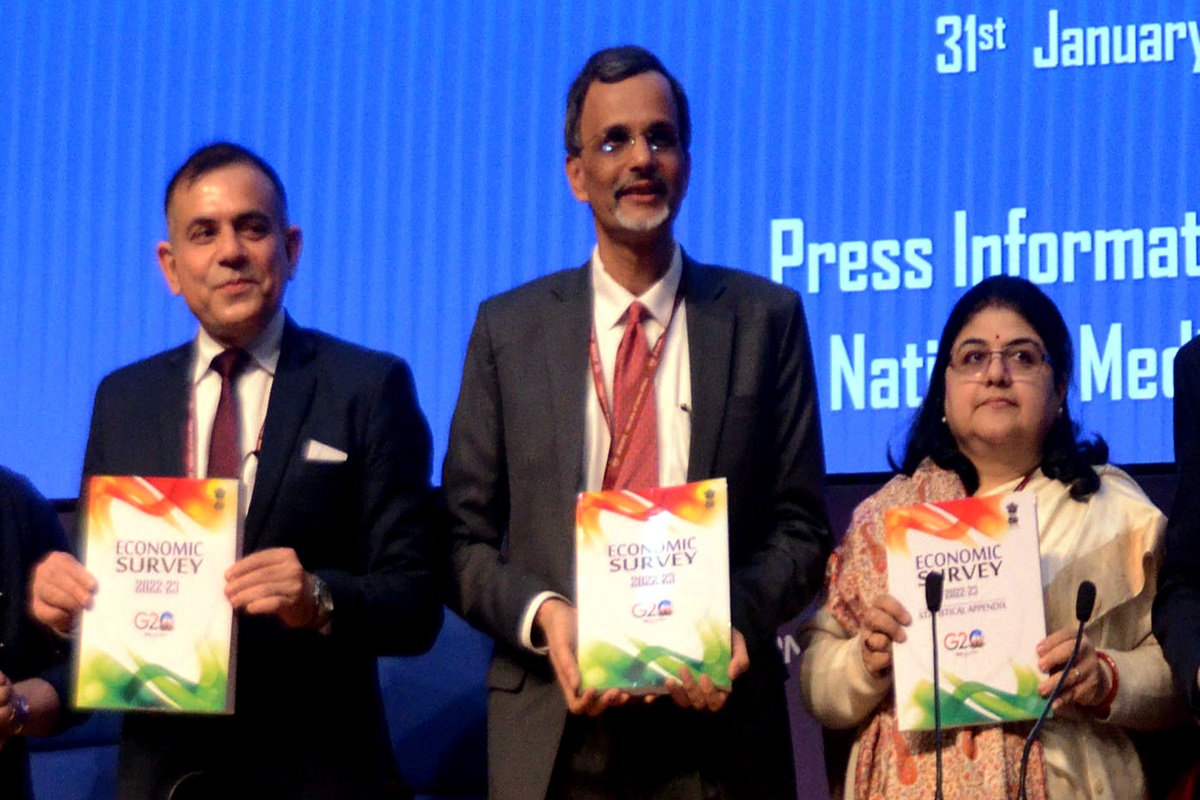FM hands over keys to homebuyers under SWAMIH Fund in Mumbai
Finance Minister Nirmala Sitharaman on Monday handed over keys to homebuyers from select projects in Mumbai Metropolitan Region (MMR).
The production of pulses has also been notably higher than the average of 23.8 million tonnes in the last five years, the Survey says.

Unvail of Brochure during Press Conference on Economic Survey-2022-23 by Dr. V. Anantha Nagaswaran, Chief Economic Advisor at NMC, in the capital on Tuesday [photo: sns]
India’s foodgrains production touched a record 315.7 million tonnes in 2021-22 despite climate change challenges, says the Economic Survey tabled in Parliament today by Union Minister of Finance Nirmala Sitharaman.
Further, as per the First Advance Estimates for 2022-23 (Kharif only), total foodgrains production in the country is estimated at 149.9 million tonnes which is higher than the average Kharif foodgrain production of the previous five years (2016-17 to 2020-21).
Advertisement
The production of pulses has also been notably higher than the average of 23.8 million tonnes in the last five years, the Survey says.
Advertisement
It describes Horticulture as a “high growth area” and “a source of buoyant growth and improved resilience for the farmer.”
According to third advance estimates (2021-22), a record production of 342.3 million tonnes in an area of 28.0 million hectares was achieved. The government has identified 55 horticulture clusters, of which 12 have been selected for the Cluster Development Programme (CDP) pilot phase.
The allied sectors of Indian agriculture – livestock, forestry and logging and fishing and aquaculture are gradually becoming sectors of robust growth and a potential source of better farm incomes, says the Survey.
Cognisant of the importance of the allied sectors, the government has made multiple interventions to enhance the infrastructure, and improve productivity and disease control.
The Survey describes that the food management programme in India comprises procurement of food grains from farmers at remunerative prices, distribution of food grains to consumers, particularly the vulnerable sections of society, at affordable prices and maintenance of food buffer stock for food security and price stability.
Advertisement